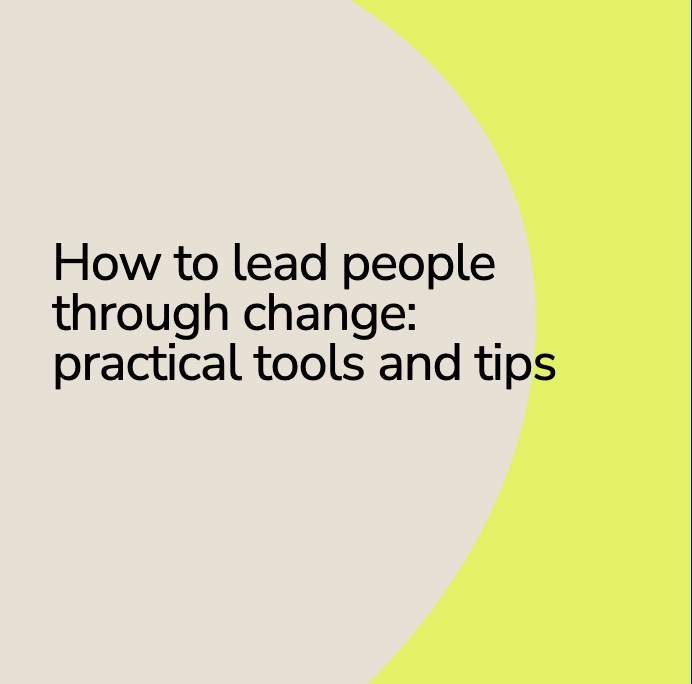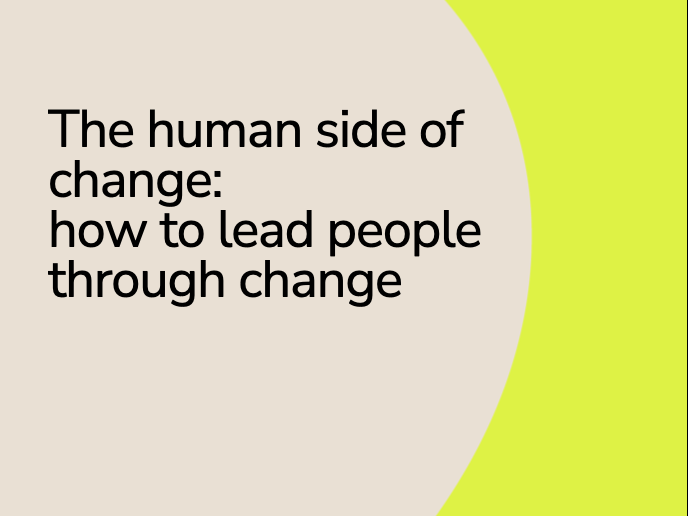How teams lead change: building connection, purpose and resilience
Change doesn’t just rely on leaders - it happens through teams.
This third and final article in the Rethinking Change series explores how teams can take shared ownership of change by connecting to purpose, working together effectively, and staying resilient through uncertainty.
When teams lead change collectively, they build stronger relationships, greater trust and lasting results.
How to lead people through change: practical tools and tips
For managers and leaders, the challenge isn’t just delivering change; it’s helping people stay steady and engaged while everything moves around them.
This article shares six practical, people-first tools to help you lead change confidently keeping communication open, morale strong and progress visible.
The human side of change management
When we think about managing change, it’s we often focus on the practical process: the plans, the steps, the models.
But change is about people and rarely succeeds when we forget the human side. This article explores how to lead people through change, and how to deal with resistance or change fatigue
Do I need a Facilitator for my Away Day or Offsite?
Team away days, off-sites, leadership strategy, brand or culture workshops can be brilliant opportunities to reconnect, realign and refocus your people. But how do you make sure that they don’t feel like a waste of time and that you create meaningful impact and tangible results?
This article explores the benefits of using an external Facilitator to design and run your meeting.
5 Steps to Building Brilliant Teams. No 5. Results
Teamwork is about getting things done. It’s about making progress on the things that matter most. Results give focus, energy, and meaning to all the work that happens day-to-day. That’s why great teams align around shared results — and make them visible, measurable, and worth celebrating.
This is the final blog in my series exploring how to build a brilliant team — inspired by Patrick Lencioni’s Five Dysfunctions of a Team model.
5 Steps to Building a Brilliant Team. 4. Accountability
Accountability is how trust and commitment come to life in action. It’s about making sure what we said would happen, actually happens. It is a sign of mutual respect. It’s about showing up for each other.
This is the fourth blog in my series exploring how to build a brilliant team — inspired by Patrick Lencioni’s Five Dysfunctions of a Team model.
5 Steps to Building Brilliant Teams. 3. Commitment
Commitment in teams isn’t about getting everyone to agree - it’s about shared clarity and confidence in the way forward. Real commitment in teams doesn’t come from keeping everyone happy. It comes from clarity.
Without clarity, teams drift. Without commitment, teams stall.
This is the third blog in my series exploring how to build a brilliant team — inspired by Patrick Leconi’s Five Dysfunctions of a Team model.
5 Steps to Building a Brilliant Team. No 2. Healthy Conflict.
When people hear the word conflict, most of us flinch. We think of drama. Arguments. Division. But healthy conflict makes ideas stronger, decisions better, and teams more committed to what happens next.
This is the second article in my series exploring how to build a brilliant team — inspired by Patrick Lencioni’s Five Dysfunctions of a Team model.
5 Steps to Build a Brilliant Team No. 1 It Begins with Trust
In this series, I’m exploring what makes teams succesful — and how to apply the ideas to your team to make it happy, motivated, and productive. First up - Trust.
I’m exploring Patrick Lencioni’s The Five Dysfunctions of a Team model not to dwell on dysfunction.
Building Brilliant Teams: Tips for Founders and Entrepreneurs
Starting a business is exciting, intense, and full of unknowns. But one of the biggest challenges and opportunities you'll face as a founder is building your team. Who you hire, how you lead, and the culture you create will make or break your business.
Here are Tips for Founders and Entrepreneurs.










